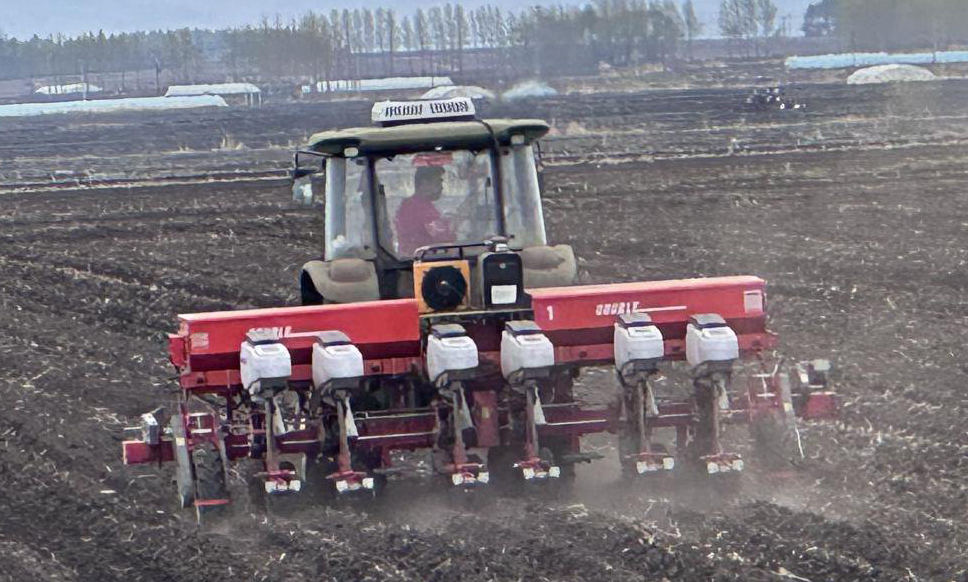Precision Seeding Technology New Generation Seeders Transforming Crop Production
Precision seeding technology is reshaping the future of agriculture, and our company’s new generation seeders are at the forefront of this transformation. By combining advanced engineering with smart data-driven systems, these machines deliver unmatched accuracy, efficiency, and sustainability. Farmers across the globe are already seeing the benefits in higher yields, reduced input costs, and more environmentally friendly operations.
For decades, traditional seed drills have been the backbone of crop establishment. However, uneven seed distribution, variable soil conditions, and inconsistent planting depth have limited their effectiveness. Today, with climate change pressures and the need to feed a growing global population, farmers require tools that maximize every seed’s potential. Precision seeding equipment answers this challenge.
How New Generation Seeders Work
Unlike conventional models, new generation seeders use GPS-guided row units, electronic metering, and variable-rate technology to place each seed exactly where it should be. Integrated sensors monitor soil moisture, temperature, and compaction in real time, automatically adjusting planting depth and spacing. This ensures uniform emergence and optimal plant density, two critical factors for achieving higher yields.
The machines are also designed with modular components that simplify maintenance and upgrades. Farmers can integrate fertilizer applicators, microgranule dispensers, and even automated weed detection systems into the same pass, reducing field traffic and fuel consumption.
Environmental and Economic Benefits
Precision seeding technology isn’t just about planting seeds more accurately; it’s about making agriculture more sustainable and profitable. By reducing overlap, minimizing seed wastage, and optimizing input usage, these machines lower production costs and reduce environmental impact. Less soil disturbance means better soil structure, improved water retention, and lower greenhouse gas emissions.
For governments and large-scale farming enterprises, the adoption of such equipment aligns with sustainability goals and supports policies aimed at climate-smart agriculture.

Q&A: Common Questions About Precision Seeding Technology
Q1: What makes precision seeding different from conventional planting?
A1: Precision seeding uses advanced sensors, GPS guidance, and electronic metering to place seeds at precise depths and spacing. This improves germination rates, crop uniformity, and overall yield compared to traditional drills.
Q2: Can small farms benefit from new generation seeders?
A2: Absolutely. Many manufacturers, including us, offer compact versions or modular add-ons that make precision seeding affordable and scalable for smallholders.
Q3: How does precision seeding support sustainability?
A3: By reducing input wastage, lowering soil disturbance, and optimizing plant populations, precision seeding cuts costs and environmental impact simultaneously.
Q4: What crops are best suited to this technology?
A4: Precision seeders can handle a wide range of crops including cereals, oilseeds, legumes, and even specialty crops. Adjustable settings allow operators to fine-tune performance for each seed type.
Smart Farming Integration
Our new generation seeders are part of a larger smart farming ecosystem. Data collected during planting can be transmitted to farm management software, enabling farmers to analyze performance, predict yields, and plan future operations. Combined with drone imagery and satellite data, this creates a feedback loop that continuously improves decision-making.
For example, variable-rate seeding can be combined with variable-rate fertilization, irrigation, and crop protection to create a truly integrated precision agriculture system. This holistic approach maximizes efficiency at every stage of production.
Market Trends and Global Adoption
The global market for precision seeding equipment is growing at double-digit rates. In North America and Europe, large agribusinesses are replacing older seed drills with GPS-enabled units. In Asia and Africa, government programs and cooperatives are helping small farmers access this technology through subsidies or shared equipment models.
Our company has responded to this demand by expanding our production capacity and establishing service networks worldwide. Training programs, online support, and spare parts logistics ensure that customers receive full value from their investment.
Case Study: Increasing Yields with Precision Seeding
A 5,000-hectare wheat farm in Eastern Europe adopted our new generation seeders last season. By switching from conventional drills to precision seeders, the farm achieved a 12% increase in yield and reduced seed usage by 8%. Fuel consumption dropped by 15% thanks to fewer field passes, and the farm qualified for an eco-farming certification that opened new export markets.
Q&A: Investing in New Generation Seeders
Q5: What is the typical return on investment?
A5: Many farmers recover their investment within 2–4 seasons due to higher yields, lower seed costs, and reduced fuel consumption.
Q6: How difficult is it to operate these machines?
A6: Our seeders feature intuitive interfaces, touchscreen controls, and remote diagnostics. Training sessions and online tutorials make it easy for operators to get started.
Q7: Do these machines require special maintenance?
A7: Routine maintenance is straightforward. Electronic components are sealed and modular, while mechanical parts are designed for long life under tough conditions.
The Future of Precision Seeding
Looking ahead, we see even greater integration of artificial intelligence, machine learning, and robotics. Future seeders will not only plant seeds with unmatched precision but also identify soil variability on the fly, detect pests at emergence, and adjust planting plans autonomously.
These advances will help farmers adapt to unpredictable weather, labor shortages, and tightening environmental regulations. By investing in precision seeding technology today, growers position themselves at the forefront of sustainable, profitable agriculture.
Conclusion
Our new generation seeders are more than machines; they are catalysts for change. They empower farmers to achieve higher productivity, protect natural resources, and meet the world’s growing food demand. As precision seeding technology continues to evolve, it will redefine how crops are planted and harvested, setting new standards for efficiency and sustainability across global agriculture.
5. Get Your Personalized Solution Now
→ Call the selection hotline: +86 158 5359 8030 (also supports accessory customization inquiries).








